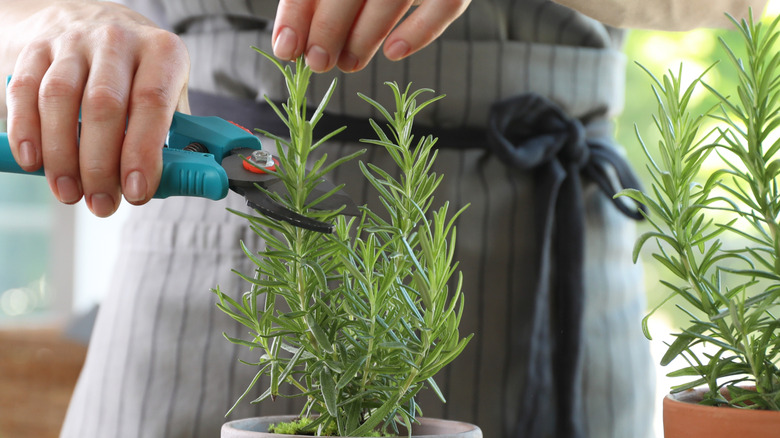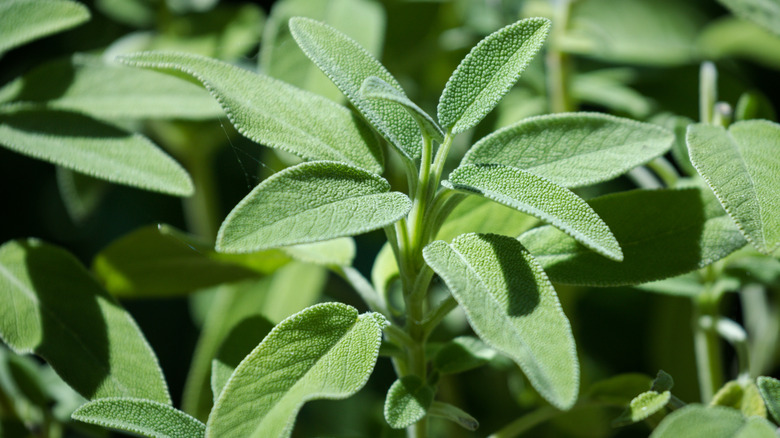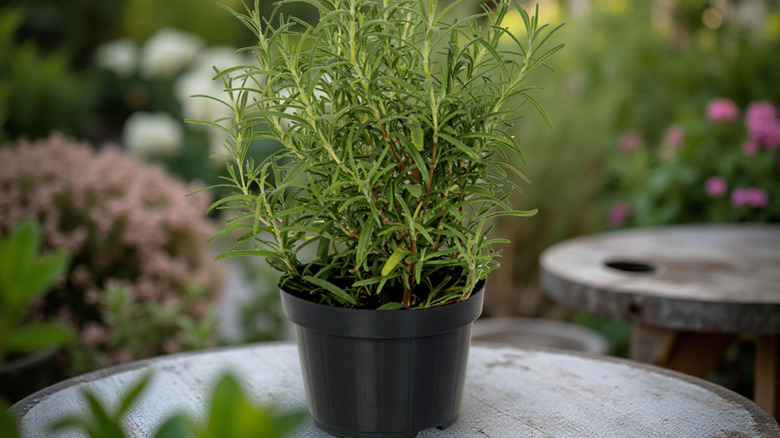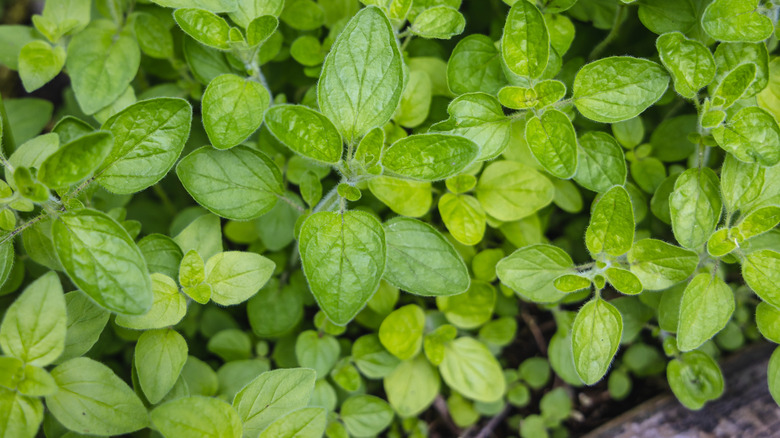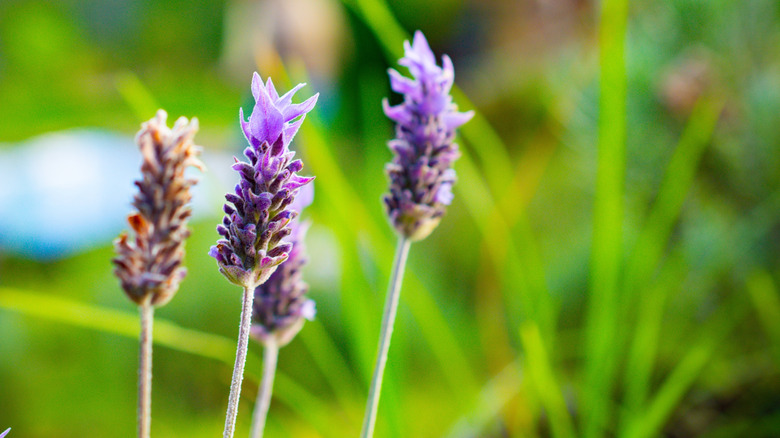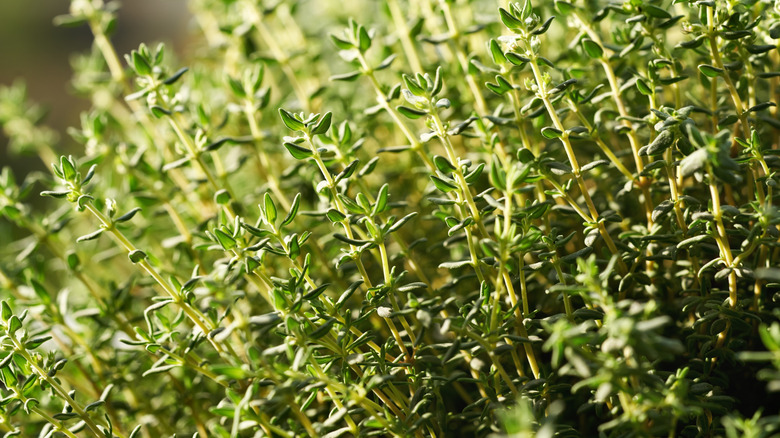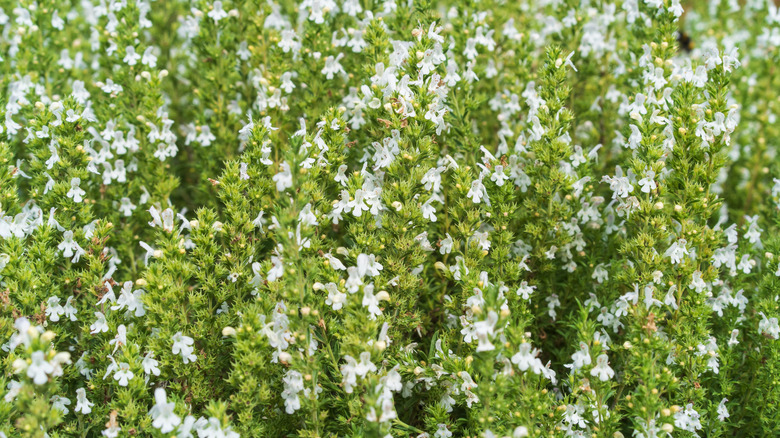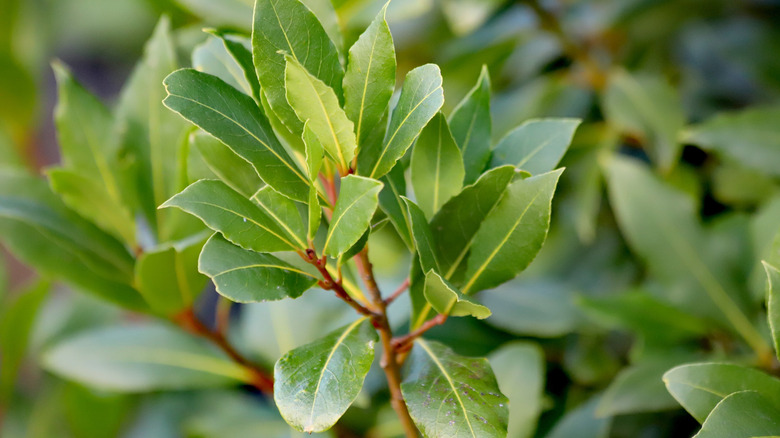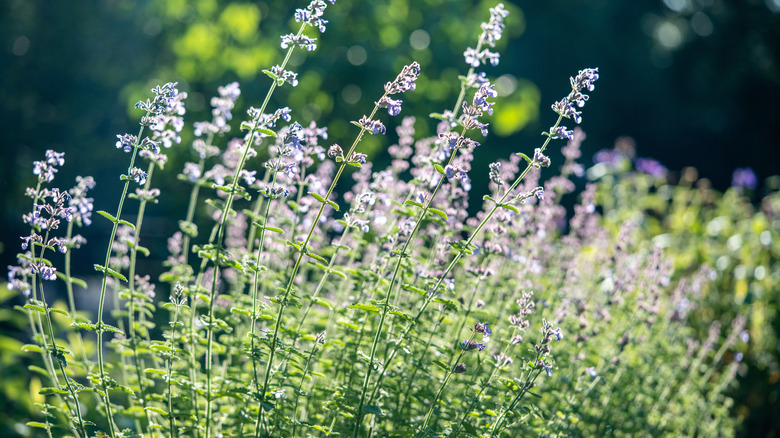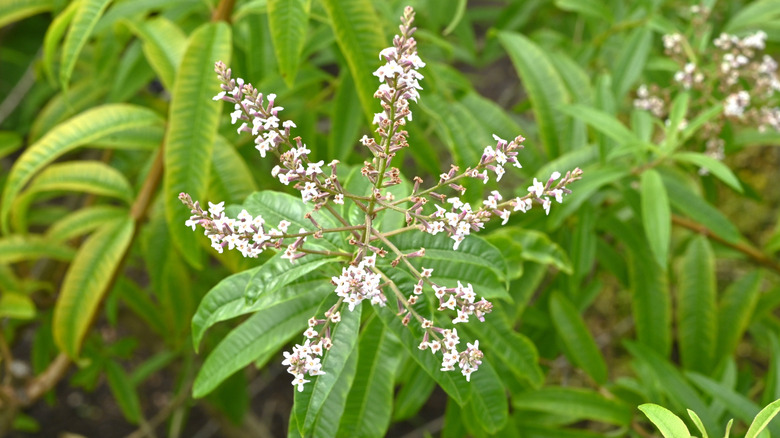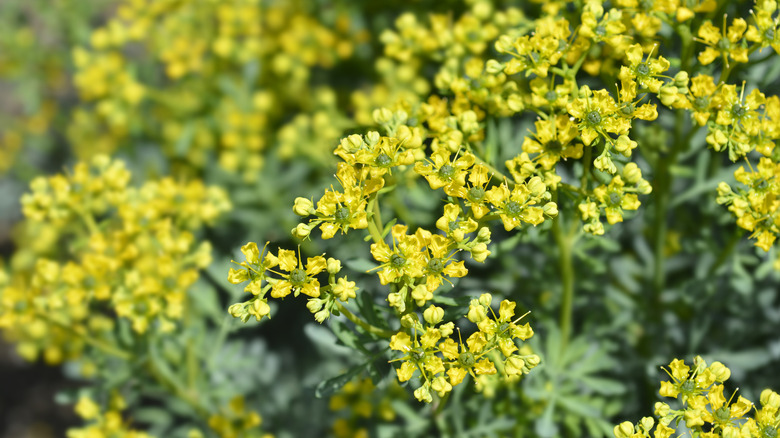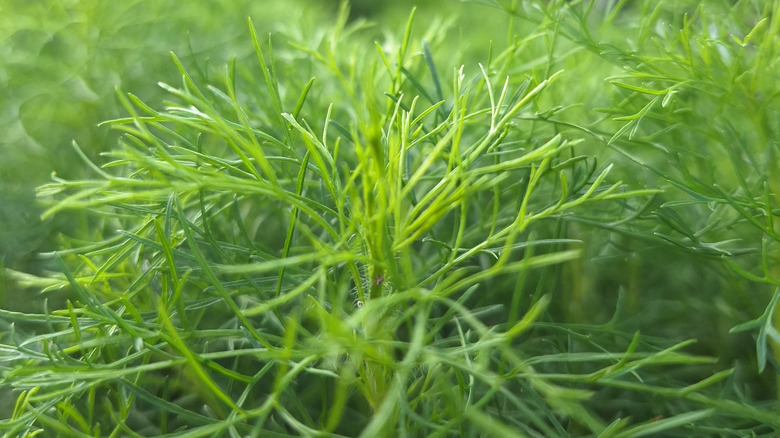11 Herbs To Avoid Pruning In The Fall (And What To Do Instead)
Fall is unarguably associated with garden clean-up, with many gardeners using this time to cut back dead foliage and gather up shed leaves and branches strewn around the yard. However, you shouldn't apply this tidy mentality indiscriminately, nor to all your plants. Certain woody and leafy perennial herbs, including sage, oregano, lavender, lemon verbena, rue, and thyme, among others, cannot handle pruning in the fall. Cutting them back promotes a spurt of soft growth that struggles to harden off in time for winter. Your plants also may not be able to seal the wounds caused by your shears before the cold weather arrives.
This hurts the herbs' ability to overwinter, even if they're being grown in their USDA Hardiness Zone range. Retaining the foliage of other herbs, like rosemary and catnip, throughout the winter provides vital cover for wildlife, hence making a better case for a spring pruning. However, this doesn't mean you cannot prune herbs at all in the fall. For the most part, diseased wood, frost-damaged parts, and dead flowers can be removed to maintain a healthy garden. For any big cuts made with the purpose of strengthening an herb or promoting vigorous growth, wait until spring.
Sage
It's standard practice to remove the mature woody growth of sage (Salvia officinalis) because it almost never sprouts new leaves. You might also be tempted to let it flower — and later deadhead those blooms — to attract pollinators. However, always wait until the spring to prune your sage, eliminating old, woody growth to refresh its appearance. This holds especially true in cold climates where old stems protect the plant from frost and cold damage. At times, this hardy growth doubles as wildlife cover.
Rosemary
Although it's reasonable to pinch the stem tips of the rosemary (Salvia rosmarinus) throughout the growing season to encourage new growth, you may want to stop doing that in the fall, starting in September. Several birds, including goldfinches, depend on the seeds for food. Additionally, growth slows down during this season to help the plant survive the winter. Push any rejuvenating shaping and pruning of bare, woody stems into your spring (mid-March to April) to-do list.
Oregano
While oregano (Origanum vulgare) successfully overwinters in Zones 4 to 10, avoid pruning it in fall. You will encourage new growth, which may suffer cold damage, and delay winter dormancy. Keep track of the first hard frost and count back four to six weeks. This is the cutoff for any severe pruning — usually in mid-summer. You can cut back the plant again by one-third in late spring, after the danger of frost has passed. This will stimulate fresh growth and ensure a tidy plant.
Lavender
Don't make the mistake of pruning lavender at the wrong time — that is, in the fall. It's when these shrubs (Lavandula spp.) start to go dormant, which makes it difficult to distinguish live branches from dead. Moreover, any new growth encouraged by fall pruning could die in frosty temperatures. Instead, wait until it's past the last frost dates in spring. Give the herb a chance to leaf out before snipping it 4 to 6 inches above the ground. Don't cut into any leafless, woody parts. They won't green up or bush out.
Thyme
By pruning thyme (Thymus vulgaris) in the fall, you encourage it to produce new leaves that are not hardy to frost or low temperatures. To protect your plant, push any major pruning to spring. After the last frost, clip away one-third of the oldest, woodiest stems to promote branching and manage your plant's size. You can prune thyme again in the summer when it's flowering to redirect its energy into foliage production. Pinch off the budding tips or cut the whole plant down by half.
Winter savory
While you don't ever have to worry about pruning some beautiful garden plants, this isn't the case for winter savory (Satureja montana). This hardy herb gets woody as it ages and needs renewing clips. In cold climates, this plant, which tastes like pepper, may lose its leaves, making it difficult to spot dormant growth from the dead or decaying growth. For this reason, winter savory is best pruned in the spring rather than in the fall. Note, too, that winter savory loses its vigor after two years and needs to be replaced.
Sweet bay
In the case of sweet bay (Laurus nobilis), pruning practices vary depending on this herb's use — though none of them involve fall pruning. If you want to use the fresh leaves, then prune the plant in late winter when it's dormant. Snip off winter-damaged or dead stems to give the tree a flush of lush foliage. Alternatively, you can cut back the plant to its base to encourage future growth. If you're growing your bay tree for topiary, prune it in the summer.
Catnip
Although you can certainly snip off any dead flowers and foliage in the fall, it's better to wait until early spring to cut back catnip for the healthiest plant possible and the most ecological benefits. Many of the insects you want in your garden, including ladybugs, overwinter in the foliage. In the spring, as the plant (Nepeta cataria) starts to push out new growth, clip off last season's dead flower stalks to at least the first set of green leaves. While it seems severe, the plant will soon recover.
Lemon verbena
Being tender, herbaceous perennials in Zones 8 to 10, lemon verbena (Aloysia citriodora) can be counted on to return to your garden on its own each year. Unfortunately, they tend to grow straggly if left unpruned. Hard pruning them in the fall may not give the herbs sufficient time to heal their wounds for protection against the cold and wet of winter. They're better off snipped in late spring — cut the dead tops off where the first green leaves emerge and prune the tips of new growth to create a bushier plant.
Garden rue
While you can remove spent blooms from garden rue (Ruta graveolens) throughout the growing season, hold off on any pruning past mid-summer and definitely don't make any cuts in the fall. The plant won't have the time to recover before the winter sets in. Wait for your rue to leaf out in spring, then use shears to cut back the old growth to at least 6 inches above the ground. This will also encourage layering, making the plant bushier. Don't forget to wear gloves as rue can irritate the skin.
Southernwood
In areas with mild winters, southernwood (Artemisia abrotanum) retains some of its leaves, providing interest in a cold-season garden. That's why you should do an annual maintenance pruning in late winter or spring rather than in the fall. In the uncommon event of an extreme winter, where the cold snaps dehydrate or deaden the leaves, waiting for the plant to green up in early to mid-spring before pruning can avoid long-term damage or trimming mistakes. Cut back the old growth to the base or the first green shoots.
